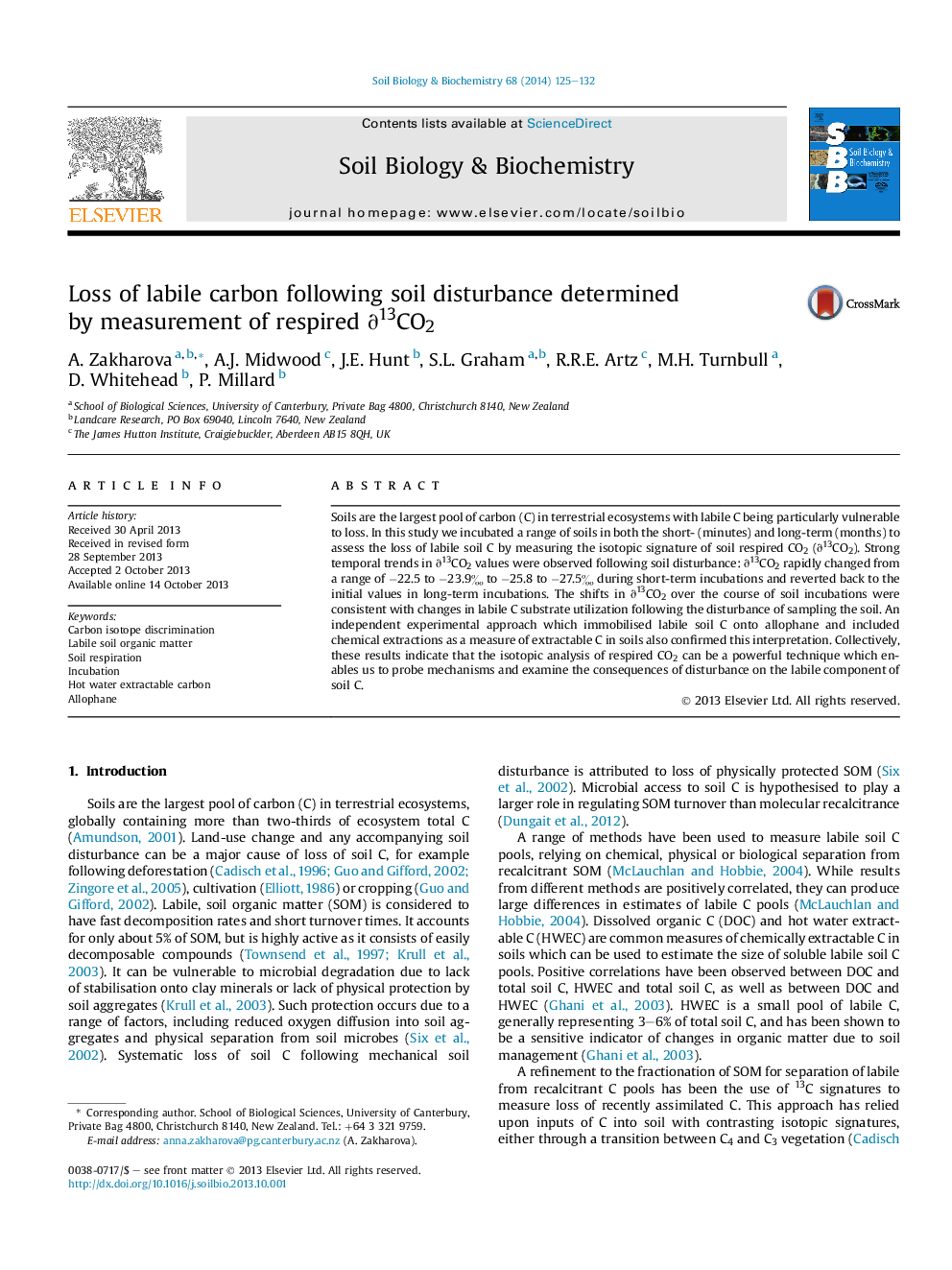| Article ID | Journal | Published Year | Pages | File Type |
|---|---|---|---|---|
| 8364989 | Soil Biology and Biochemistry | 2014 | 8 Pages |
Abstract
Soils are the largest pool of carbon (C) in terrestrial ecosystems with labile C being particularly vulnerable to loss. In this study we incubated a range of soils in both the short- (minutes) and long-term (months) to assess the loss of labile soil C by measuring the isotopic signature of soil respired CO2 (â13CO2). Strong temporal trends in â13CO2 values were observed following soil disturbance: â13CO2 rapidly changed from a range of â22.5 to â23.9â° to â25.8 to â27.5â° during short-term incubations and reverted back to the initial values in long-term incubations. The shifts in â13CO2 over the course of soil incubations were consistent with changes in labile C substrate utilization following the disturbance of sampling the soil. An independent experimental approach which immobilised labile soil C onto allophane and included chemical extractions as a measure of extractable C in soils also confirmed this interpretation. Collectively, these results indicate that the isotopic analysis of respired CO2 can be a powerful technique which enables us to probe mechanisms and examine the consequences of disturbance on the labile component of soil C.
Related Topics
Life Sciences
Agricultural and Biological Sciences
Soil Science
Authors
A. Zakharova, A.J. Midwood, J.E. Hunt, S.L. Graham, R.R.E. Artz, M.H. Turnbull, D. Whitehead, P. Millard,
